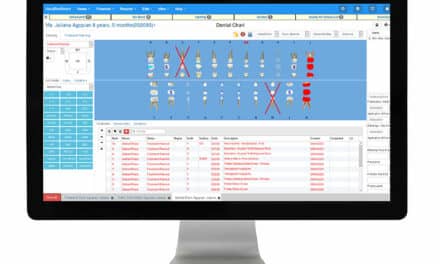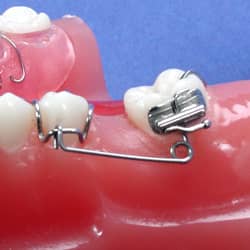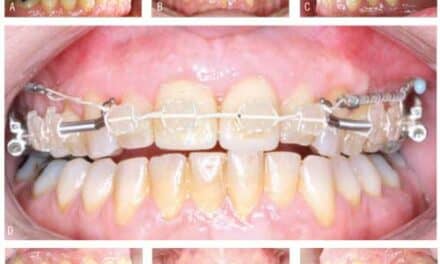by Sanjivan Kandasamy, BDSc, BScDent, DocClinDent, MOrthRCS, and Jim Bokas
 |
There is no doubt that as practices become busier, systems that optimize patient flow and clinical management against the constraints of time become vital. A facet of this evolution toward becoming hyperefficient involves adopting the one-visit, single-consultation approach. At a glance, this makes sense—but is the single consultation really advantageous in the long term, and should it be incorporated into every consultation?
In the majority of cases, when all records are available, an immediate, correct diagnosis and treatment plan can be made during the same visit. There are cases, however, when an issue such as a dental or skeletal asymmetry, underlying Class III growth pattern, caries, or periodontal disease goes undetected. This oversight may result in overwhelming operator stress and patient dissatisfaction, as well as increased treatment times and visits. The operator may then realize the need for additional consultations during treatment and for explaining why treatment has progressed the way it has. Remember: If you say it in advance, it’s a diagnosis; if you say it after the fact, it’s just an excuse.
Both the clinician and the patient need time. The clinician needs time to make a diagnosis, prepare a treatment plan, and communicate these to the patient. In turn, the patient needs time to understand the information, process it, and make the appropriate decision. Also, with information so accessible via the Internet, we are gradually moving from the mind-set of telling patients what we think they need to know (doctor-dictated patient care) to letting them know what all of their options are and allowing them to make the informed decision regarding treatment (patient-driven health care).1
Certain cases demand more time to establish a well-structured treatment plan and associated treatment options. More time is then required to communicate these issues to patients and their families. This extra time allows the clinician to identify and clarify unreal patient and parental expectations. Only once this understanding is achieved can one adequately obtain informed consent from the patient.2 Spending the appropriate time discussing various aspects of the proposed treatment and establishing a rapport with the patient have been shown not only to minimize confusion or anxiety during treatment but also to improve patient compliance.3-8
Apart from the obvious reasons for prolonged treatment times, the major reasons for increased treatment times and patient dissatisfaction are incorrect diagnoses, incorrect treatment planning, and poorly informed patients.3,4,9,10
The key is identifying patients who may respond unfavorably to the single-consultation approach and who would therefore require more time with the orthodontist for discussion regarding their treatment. We must assess the risk potential in the patients that present in our practices for the first time.
Potential risks may include the patient who is not dentally aware, factors such as language barriers and differences in educational and cultural backgrounds, cases that require interdisciplinary management, cases with dental and skeletal asymmetries, growth-related issues, and borderline surgical and extraction patients. There are also those patients who request compromised treatment plans and need to be made aware of the potential for negative sequelae.2–11
Can we totally avoid future problems? The answer, simply, is no. Certainly, there are many factors that are beyond our control, but we can take measures to minimize the risk of problems occurring in the future.
In the majority of cases, a single consultation works well; however, in a small percentage of cases, it may not. In these cases, the cost (or so-called “inefficiency”) of a second or even a third appointment to finalize the treatment plan and communicate all the issues with the patient would appear trivial in the long term compared to the emotional, physical, and financial stress associated with any legal action. Of course, let us not forget the toll on the clinician’s self-confidence and the inevitable loss of referrals as a result of a complaint or negative outcome. The famous American proverb “a stitch in time saves nine” is the kind of risk-management philosophy every clinician should adopt before embracing any practice-management strategy concentrating on the bottom line.
Sanjivan Kandasamy, BDSc, BScDent, DocClinDent, MOrthRCS, is a a senior lecturer and research associate at the Department of Orthodontics at the University of Western Australia. He has a private practice in Perth, Western Australia. He can be reached at
References
- Rinchuse DJ, Rinchuse DL, Sweitzer EM. What is the patient’s name? Am J Orthop Dentofacial Orthod. 2004;126:234–236.
- Baird JF, Kiyak HA. The uninformed orthodontic patient and parent: treatment outcomes. Am J Orthod. 2003;124:212–215
- Sinha PK, Nanda RS, McNeil DW. Perceived orthodontist behaviors that predict patient satisfaction, orthodontist-patient relationship, and patient adherence in orthodontic treatment. Am J Orthop Dentofacial Orthod. 1996;110:370–377.
- Nanda RS, Kierl MJ. Prediction of cooperation in orthodontic treatment. Am J Orthop Dentofacial Orthod. 1992;102:15–21.
- Klages U, Sergl HG, Burucker I. Relations between verbal behavior of the orthodontist and communicative cooperation of the patient in regular orthodontic visits. Am J Orthod Dentofac Orthop. 1992;102:265–369.
- Brattstrom V, Ingelsson M, Aberg E. Treatment co-operation in orthodontic patients. Br J Orthod. 1991;18: 37–42.
- Gerbert B, Bleecker T, Saub E. Dentists and the patients who love them: professional and patient views of dentistry. J Am Dent Assoc. 1994;125:264–272.
- Corah NL, O’Shea RM, Bissell GD. The dentist-patient relationship: perceptions by patients of dentist behavior in relation to satisfaction and anxiety. J Am Dent Assoc. 1985;111:443–446.
- Ellis PE, Benson PE. Potential hazards of orthodontic treatment—what your patient should know. Dent Update. 39:492–496.
- Skidmore KJ, Brook KJ, Murray Thomson W, Harding WJ. Factors influencing treatment times in orthodontic patients. Am J Orthop Dentofacial Orthod. 2006;129:203–238.
- Sondhi A. Efficient and effective consultations. J Clin Orthod. 2003;37:81–89.










